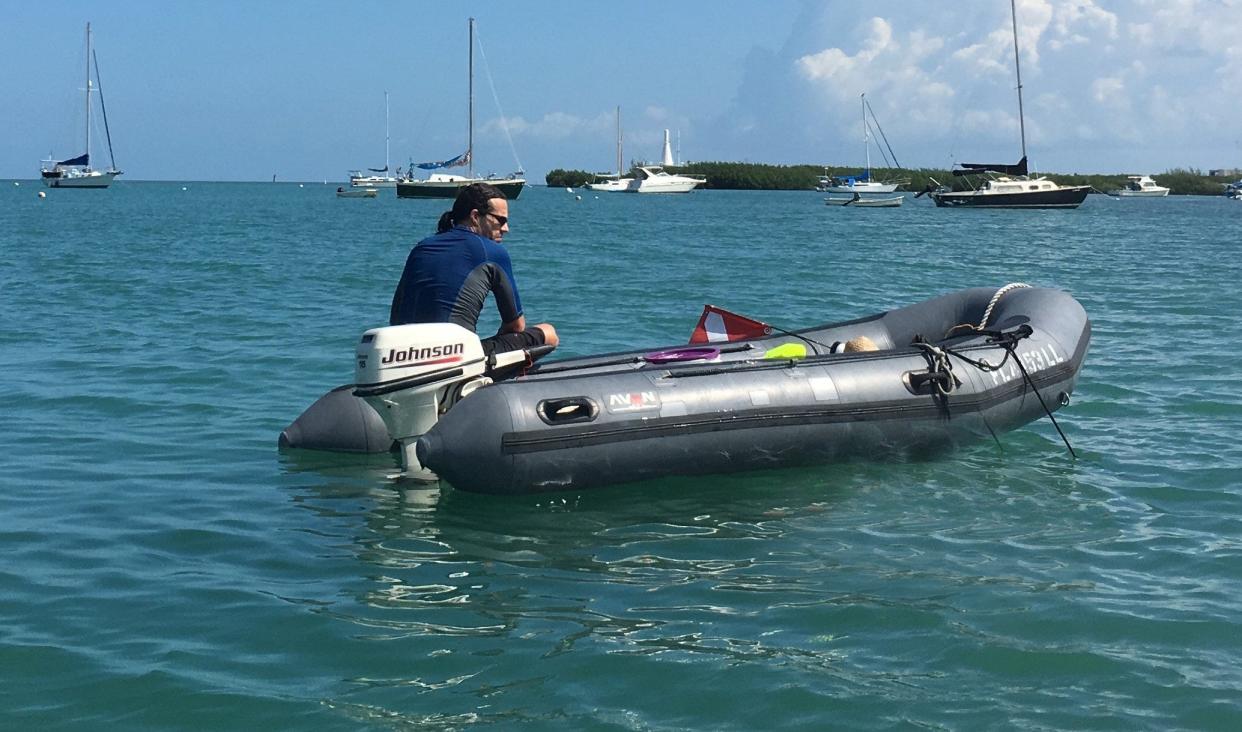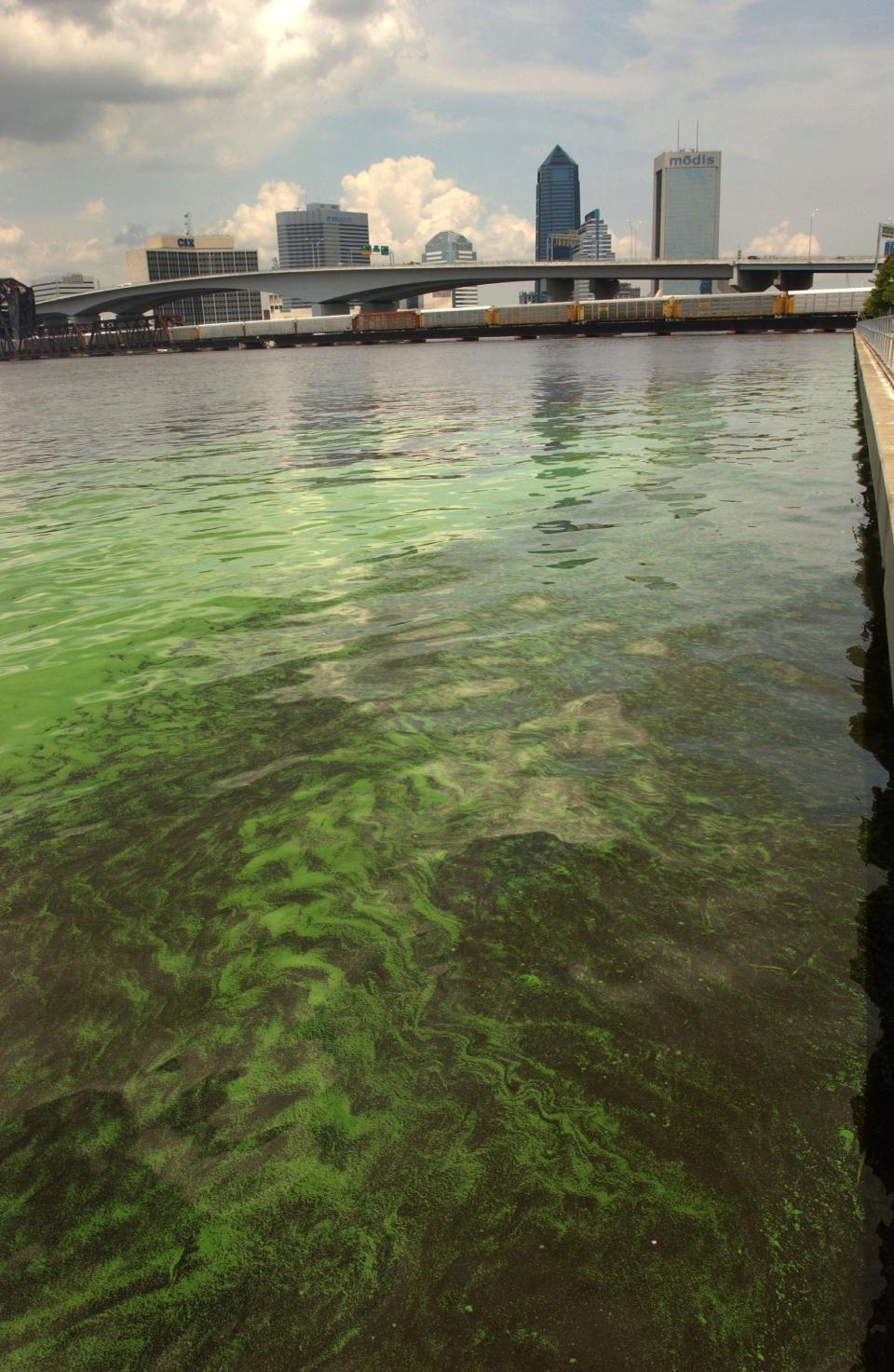Researchers, including in Jacksonville, warn of perilous salinity changes in warming oceans

Cliff Ross notes that in stories and studies on human-caused climate change, most of the emphasis is on a rapidly warming world that is expected to only get hotter and hotter.
That's fair enough, he says — and that's taken on increased urgency as intense heat waves hammer various parts of the globe this summer, a phenomenon scientists are linking to climate change.
But Ross, a marine biologist who's head of the Biology Department at the University of North Florida and part of an international research team, wants to bring attention to another effect of a hotter Earth — changing salinity levels in the world's oceans, which could themselves bring about big changes across the planet.
It's a complex issue, but those changing salinity levels could have major impacts on the world's economy, on creatures that live in the ocean and on the residents of coastal areas — Florida certainly included.
Sound off: Readers' take on climate change
Why is the ocean salty? Ocean salinity explained, plus the world's saltiest ocean
Think of changing salinity levels, along with warming oceans, as a "double-whammy," Ross said.
"It’s going to affect everything, from bacteria to whales," he said, noting that changes to the food chain in the ocean will be inevitable. “It will be a global issue that all types of organisms will have to contend with.”
'Profound' changes ahead
Another alarming possibility: Salinity, which is the concentration of salt in seawater, has a major effect on deep ocean currents that affect global climate, moving heat from the tropics to the poles. If those currents change, so could the climate, drastically.
“It’s profound," Ross said. "It’s a big deal.”
Ross and the group of researchers led by German scientist Till Röthig this month released a paper called "Human-induced salinity changes impact marine organisms and ecosystems." Also involved was Stacey Trevathan-Tackett, a UNF biology graduate program alumnus who's now a research faculty member at Deakin University in Australia.
The paper is a comprehensive synthesis, Ross said, of numerous studies that have touched on various aspects of oceanic salinity levels. "What we’re doing is consolidating a lot of information that is out there, and providing this perspective on something that’s been overlooked for a long time," he said.
Rising salinity levels: St. Johns River's rising salinity impacts river life, fuels concerns about future
The effects of ocean warming and acidification have been comprehensively researched, the paper says, though less attention has been given to "human-driven ocean salinity changes."
It's "the elephant in the room," according to the paper, and it urges that it can no longer be overlooked.
"It provides food for thought for other studies," Ross said. "It’s basically telling scientists, 'Let's think about changes in salinity.' We’re just saying, once again, that salinity is part of this complicated equation, and study this with whatever else you’re studying.”
Ross is asked: Could we see a vastly different ocean in the future?
"I think so," he said. "We already are.”
Oceans at risk
It's been established that salinity levels are changing, and are expected to intensify, he said.
Changing weather patterns due to climate change are contributing to that, making saltier areas of the oceans saltier, and fresher water more fresh.
“What’s going on all over the globe in the ocean is, as it gets warmer, with more sunlight you get more evaporation and water going into the atmosphere," he said. "The important point is that the water left behind is getting saltier."
But the water that evaporates will later come down elsewhere as rainfall, making the ocean there more fresh.
It's all part of a complex system of factors, including warming oceans, acidification and sea-level rise that causes inflow into coastal areas. That can put coral, plankton, mangroves, tidal marshes, macroalgae and seagrass at risk, and even lead to ecosystem collapse.

Ross said increasing salinity could also lead to more green algae blooms such as the St. Johns River has already seen.
A human-made problem
For all the urgency of the research group's paper, Ross said he thinks humans have already changed the climate in ways that are serious and long-lasting.
“I’m pretty much a pessimist. I really think it’s too late," he said. "We’re beyond that — we’ve passed that point a long time ago, even if we turned that switch off today."
Naysayers, he notes, often say the Earth's climate has always been changing, and that's true. But there's a huge new factor in the industrial age.
“What’s different now is, since humans have been on the scene, is the rate of change," he said. "It's unprecedented.”
Ross stressed that the issue of salinity change is so complex that much more study is needed, which is what his group is urging.
“I don’t have the answers," he said. "All we can say is, changes are imminent, given our trajectory.”
This article originally appeared on Florida Times-Union: UNF part of team research on climate change and ocean salinity levels

